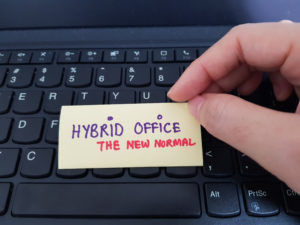Managing and Resolving Conflict in the NEW Workplace: It’s all in the ART | Leap Solutions Group, Inc.
By Judy Coffey
The ‘workplace’ isn’t always ‘at’ work anymore. Some employees have become comfortable with the new normal of working from home, while many companies are requesting that their employees come back to the office. These changes create a new kind of workplace conflict for employers that require new strategies for conflict resolution that will allow for a cohesive team that can successfully meet organizational goals.

Back to The Office
Employers want us back. Companies are returning to full force and requesting that employees come back to the office.
For some employees it’s “Yay!” but for others it’s “Nay” and that’s creating a new type of workplace conflict for their employers.
Employees have become comfortable with the new normal of working from home: no commute, virtual meetings and, for many, a better work focus. Other employees want to come back. They feel more fulfilled, desire the camaraderie of co-workers, and can’t wait to leave behind the chaos of working alongside children and spouses, or being interrupted by everything from Amazon deliveries to the incessant barking of neighborhood dogs (often barking at the Amazon delivery people).
Some employees are hoping for a hybrid solution, to work a few days from home and a few days in the office.
When teams or departments have a mix of those Yays and Nays, conflicts will arise and organizations will need new-ish tools to resolve a new kind of workplace conflict.
I’ve been working with a small company of 20 employees. During pandemic year one, everyone worked from home. Pandemic year two, the CEO, COO, CFO, and HR leaders returned to the workplace but all financial employees continued to work from home.
That year two arrangement soon frustrated the CFO and its team. The CFO’s weekly reports to the CEO could only stay on schedule with continuous Zoom meetings and phone calls, often well into the evening, to ensure accounting/budget sheet accuracy. Working from home was not ideal, yet the CEO felt the financial team should remain in their home offices. Team conflict grew, some feeling that others were not working hard enough to meet the financial deadlines, others becoming agitated, feeling work life balance was not being considered.
Weeks of poor performance required the CFO find a way to mange the conflict.
Conflict is not unfamiliar to people. We experience it to some degree everyday with family, friends, or neighbors, but when it occurs in the workplace or with other professionals/co-workers, it can cause high levels of frustration, discomfort, and anger.

Steps to Implementing ART
ART, Appropriate Resolution Tools, can keep differences and frustration from rising to major issues:
- Define the conflict’s cause, or causes, and discuss employees’ unmet needs or conflict catalysts.
- Find a time and safe place to talk with each individual and ensure that their views on the situation are heard.
- Provide a supportive forum for identifying the cause of conflicts. Listen actively. Be positive yet assertive, bring everyone together, set ground rules and encourage everyone to articulate thoughts in an open, honest, and calm manner. Allow everyone to have their say, give them the opportunity to express their views and perceptions.
- After listening to concerns of both parties, investigate the situation, find out more about the issues and the underlying conflict. Do not prejudge.
- Manage the conflict resolution process: find common objectives and set the stage for meeting a common goal. You have clarified the conflict, talked to the individuals, listened to the issues, and investigated the situation. It is now time to find a common goal by listening, communicating, and brainstorming resolution options.
- Focus on the future. Collectively develop a plan to work on the conflict, and plan follow-up meetings.
- Put the conflict resolution plan in place, work through the conflicted areas and build on your success.
- Find opportunities to acknowledge progress and achievements. Persistent hard work on common issues will, hopefully, pay off and give way to more dialogue, increase collective support and collective communications.

Summary
The CFO realized there were various conflicts and embraced steps to keep issues manageable. With a better understanding of how to address conflict, the team’s home-based members and their in-office counterparts now use ART to successfully meet goals.
The ‘workplace’ isn’t always ‘at’ work anymore. With that change comes a new kind of conflict, and it requires some additions or tweaks to traditional workplace conflict strategies. If or when it occurs in your organization, look to ART to soothe those workplace woes.

Are You Ready to Leap?
***
Leap Solutions is a diverse group of highly skilled management professionals serving our clients with their organizational development, human resources, and executive search and recruitment needs. We have spent decades doing what we feel passionate about helping you feel passionate about what you do. With the ever-changing COVID-19 response, our HR specialists can help you get a handle on the guidelines, programs, and legislation that may impact you and your employees. Through all of our services, we are available to work with you to develop practical solutions and smart planning decisions for your organization’s immediate, near, and long-term needs.
To print this article, Click Here

![]()
